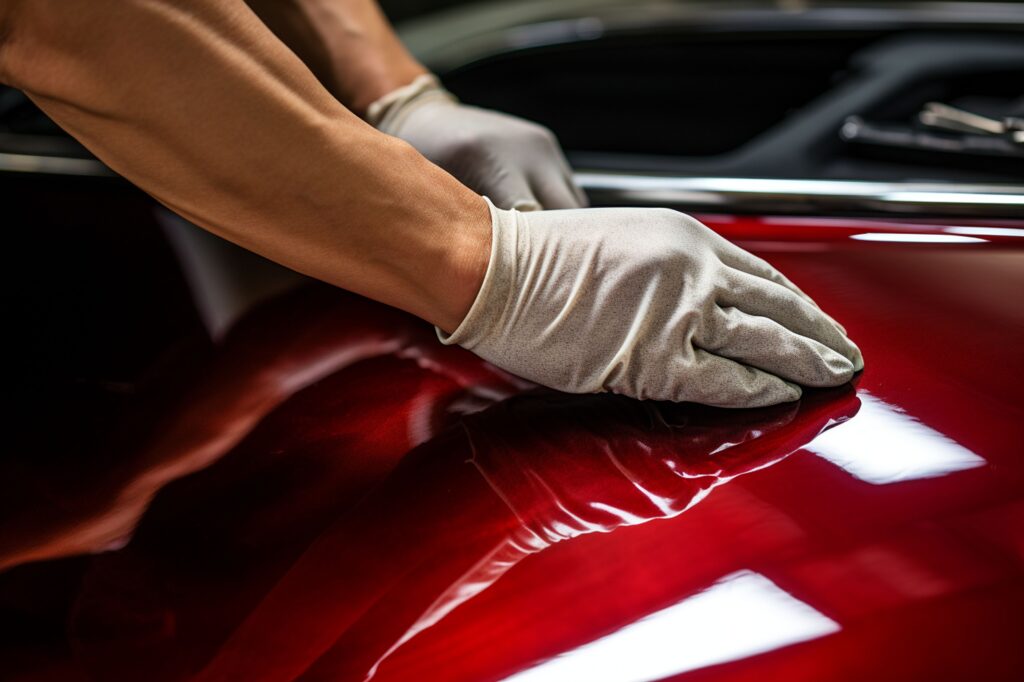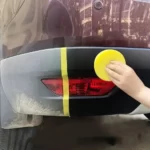Give your old car a fresh look through paint restoration services. Restore and revamp your vehicle’s paint today.
Table of Contents
ToggleOld car paint restoration is a cost-effective way to enhance the appearance of your vehicle. Over time, a car’s paint may fade, chip, or show signs of wear and tear. By restoring the paint, you can bring back its original shine and protect it from further damage.
Professional restoration services can address issues such as scratches, swirl marks, and oxidation, leaving your car looking like new. Whether you want to increase the resale value of your vehicle or simply give it a makeover, paint restoration is a worthwhile investment. With the right techniques and products, your old car can regain its former glory and turn heads wherever you go.
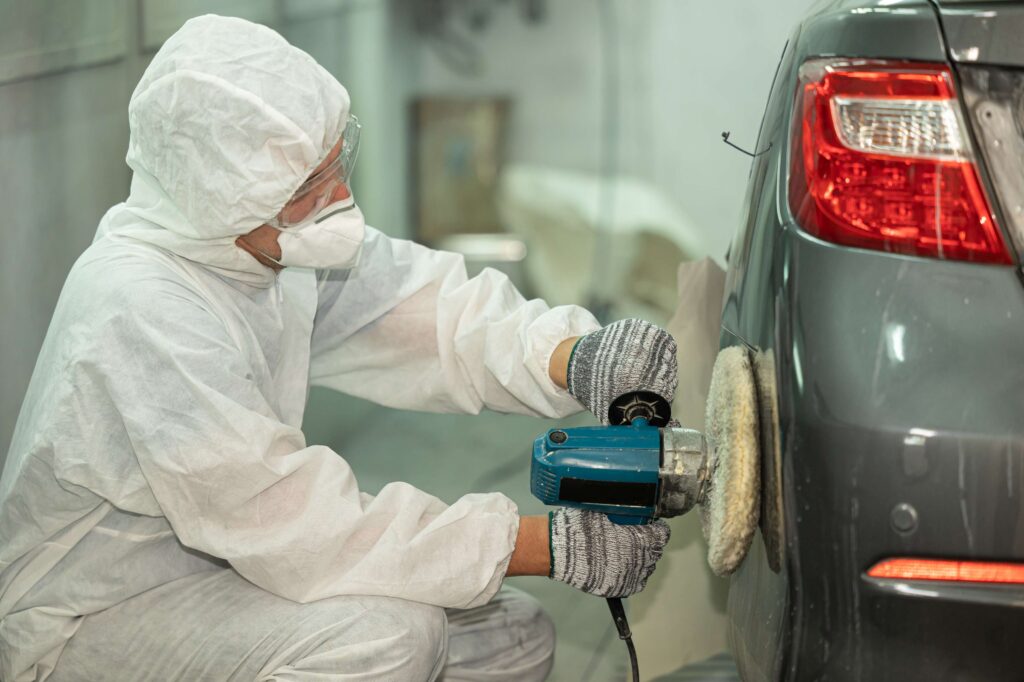
Understanding Old Car Paint
Old car paint restoration is a popular process among classic car enthusiasts. Whether you are restoring an old car or simply want to give your vintage ride a fresh coat of paint, it is essential to understand the intricacies of old car paint. Identifying paint issues, understanding the type and history of the paint, and being aware of the common problems and factors affecting the paint condition are all crucial steps in achieving a successful restoration.
Identifying Paint Issues
Before diving into the restoration process, it is important to identify any paint issues present on the old car. These issues can range from visible scratches, chips, and fading to more severe problems like rust or corrosion. Conducting a thorough inspection of the car’s surface will help you determine the extent of the damage and plan accordingly for the restoration process.
Paint Type And History
Understanding the type and history of the paint on the old car is essential for a successful restoration. Different types of paints require specific restoration techniques and products, so it is important to know whether the car has a single-stage paint or a clear coat paint. Additionally, knowing the car’s paint history, such as whether it has been repainted or has undergone any previous repairs, will help you assess the condition and plan the restoration accordingly.
Common Issues
Old car paint can suffer from a variety of common issues that require attention during the restoration process. These issues include oxidation, which leads to the paint fading and losing its shine over time, as well as paint peeling, cracking, or flaking. Additionally, old cars are often prone to rust, which can significantly affect the paint’s condition. Identifying and addressing these common issues is vital for achieving a flawless and long-lasting paint restoration.
Factors Affecting Paint Condition
The condition of old car paint can be influenced by various factors, including exposure to sunlight, harsh weather conditions, improper maintenance, and age. Over time, UV radiation and other environmental factors can cause the paint to fade, lose its color, and become dull. Understanding these factors and their impact on the paint’s condition will help you determine the necessary steps to restore and protect the car’s paint.
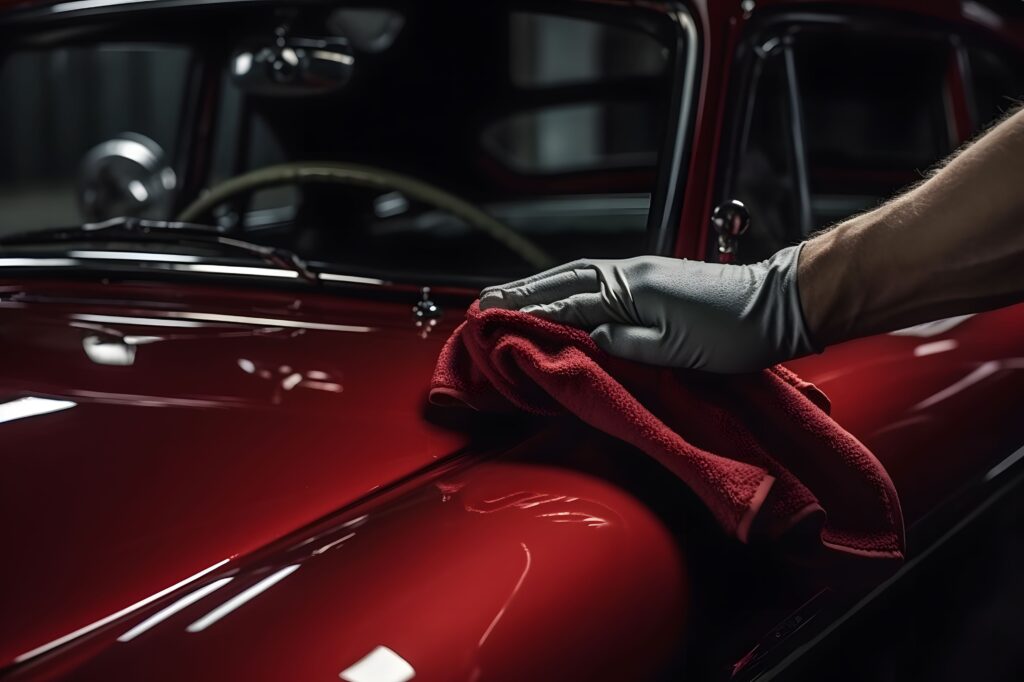
Preparing For Restoration
When restoring the paint on an old car, proper preparation is key for achieving excellent results. Here, we will discuss the essential steps under different headings to ensure a successful restoration process.
Workspace Setup
Before starting the restoration process, ensure your workspace is well-ventilated and free of dust and debris.
Cleaning The Surface
To begin, carefully clean the car’s surface using a mild soap and water solution to remove any dirt or grime.
Safety Precautions
Always wear protective gear such as gloves and a mask to safeguard yourself from harmful fumes and chemicals.
Gathering Materials And Tools
Collect all the necessary materials and tools, such as sandpaper, primer, paint, and a polishing compound, required for the restoration process.
Paint Inspection
Thoroughly inspect the car’s paint for any chips, cracks, or imperfections that need to be addressed before proceeding with the restoration.
Cleaning And Decontamination
When it comes to old car paint restoration, a crucial step in the process is the cleaning and decontamination of the vehicle’s exterior. This step is essential to ensure the paint restoration process is successful and the final result is a pristine, flawless finish.
Washing Techniques
Washing the car is the initial step in the cleaning process. Use a mild car shampoo to gently remove dirt and grime from the surface. Utilize a soft sponge or a microfiber wash mitt to prevent scratching the paint. Thoroughly rinse the car to get rid of all soap residue and avoid water spots.
After washing, it’s necessary to dry the car using a clean, soft microfiber towel. Make sure to pat the surface rather than rubbing it to prevent swirl marks on the paint.
Tar, Grease, And Stubborn Stains
For persistent tar, grease, or stubborn stains, utilize a specialized tar and grease remover. Apply the product to a clean microfiber cloth and gently rub the affected areas. Always perform a spot test in an inconspicuous area to guarantee the product won’t damage the paint.
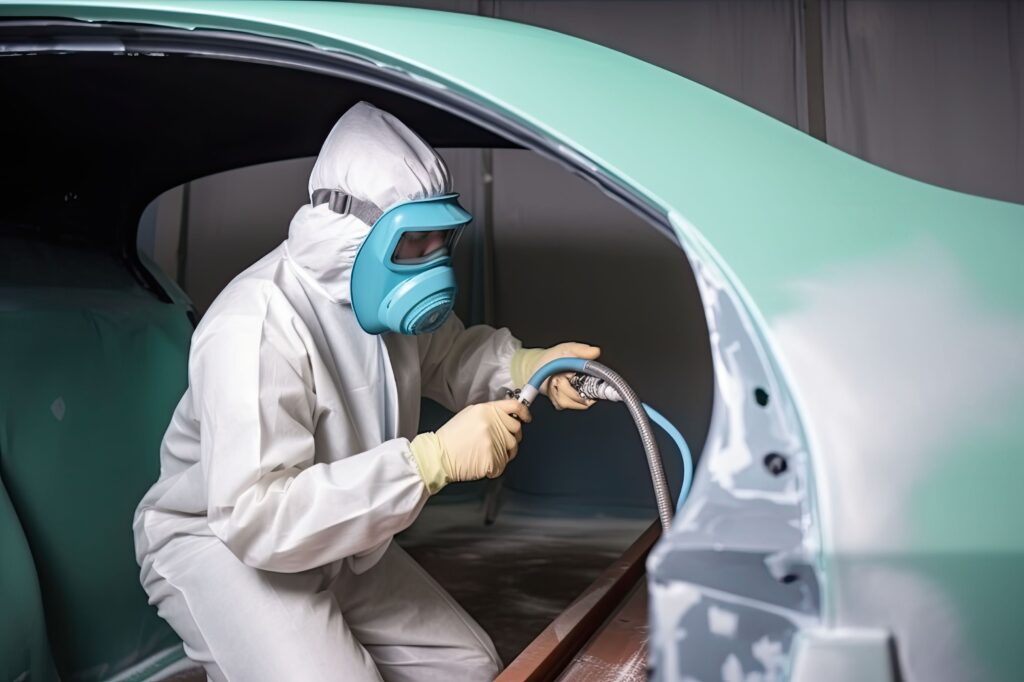
Decontamination Procedures
Decontaminating the paint surface involves removing embedded contaminants such as industrial fallout, rail dust, and environmental pollutants. Use a clay bar or a synthetic clay mitt along with a clay lubricant to gently glide over the paint, picking up bonded contaminants and leaving the surface smooth and clean.
Restoration Techniques
Restore the beauty of your old car’s paint with effective restoration techniques. Revive its original shine and luster through expert methods that bring back its former glory.
Paint Correction
A crucial step in old car paint restoration is paint correction. This technique involves removing imperfections in the paint, such as swirl marks, scratches, and oxidation. By carefully assessing the condition of the paint and selecting the appropriate tools and compounds, a skilled restorer can bring back the original shine and smoothness of the paint.
During the paint correction process, the restorer first cleans the surface to remove any dirt and debris. Then, using a machine polisher and a suitable polishing compound, they work on the affected areas, gradually removing the imperfections and restoring the paint’s luster. This meticulous process requires experience and precision to avoid damaging the paint further.
Color Sanding
Color sanding is another effective technique used in old car paint restoration. This method involves sanding the painted surface with ultra-fine sandpaper, typically wet, to even out the surface and remove imperfections that couldn’t be resolved with paint correction alone. Color sanding helps achieve a smooth and flawless finish that enhances the overall appearance of the vehicle.
During the color sanding process, the restorer uses progressively finer grit sandpaper, starting with a coarser grit and gradually moving to a finer one. The aim is to gently abrade the paint to level out any unevenness and fix issues such as orange peel texture or paint overspray. This technique requires skill and patience to avoid creating further damage or removing too much paint.

Polishing And Buffing
Polishing and buffing are the final steps in old car paint restoration. These techniques are used to enhance the shine and smoothness of the paint surface, resulting in a showroom-worthy finish. Polishing involves using a specialized abrasive compound to remove any micro-scratches and swirl marks left after color sanding.
Once the paint has been polished, buffing is performed to bring out its full shine. This involves using a buffing pad and a high-quality carnauba wax or sealant to create a protective barrier and provide a deep, glossy finish. Buffing helps restore the paint’s depth and clarity, as well as protect it from future damage caused by UV rays, contaminants, and harsh weather conditions.
By employing these restoration techniques, old car paint can be revived, and the vehicle’s appearance can be dramatically improved. Whether it’s paint correction, color sanding, or polishing and buffing, each step requires expertise and attention to detail to achieve remarkable results.
Dealing With Imperfections
When it comes to restoring the paint on an old car, it’s essential to address imperfections effectively. From scratches to swirl marks, each flaw requires special attention to achieve a flawless finish.
Scratch Repair
Scratches on a car’s paint can be frustrating, but they can be repaired with the right techniques. Begin by cleaning the scratched area thoroughly before applying a scratch repair compound. Buff the compound gently in a circular motion to blend the scratch with the surrounding paint. Finally, apply a coat of wax to protect the repaired area.
Swirl Mark Removal
Swirl marks are common imperfections that can dull the appearance of a car’s paint. To remove swirl marks, use a swirl remover polish and a soft microfiber cloth. Apply the polish in small circular motions, working section by section until the swirl marks are no longer visible. Finish with a layer of wax for added protection.
Filling Chips And Dents
Chips and dents can greatly affect the overall look of an old car’s paint job. To fill these imperfections, start by cleaning the damaged area and sanding it lightly. Use touch-up paint that matches your car’s color to fill the chip or dent. Allow the paint to dry completely before buffing the area to smooth out any rough edges.
Surface Preparation
Renewing the appearance of old car paint requires thorough surface preparation to remove dirt, grime, and imperfections. This process involves abrasive techniques like sanding and polishing to create a smooth, clean canvas for fresh paint application, ensuring a flawless restoration of the car’s original luster and shine.
Before starting with the actual process of restoring the old car paint, it is vital to focus on surface preparation. This step ensures that the paint adheres properly and results in a smooth and polished finish. Surface preparation involves various tasks like masking and taping, sanding and smoothing, and primer application. Let’s dive into each of these steps in detail to achieve the best results.
Masking And Taping
Masking and taping play a crucial role in preventing unwanted paint from getting onto areas that shouldn’t be painted. To protect trims, windows, or any other parts that do not require paint, carefully apply masking tape. Ensure that the tape is applied straight and securely adhering to the surface. Here are a few essential tips for effective masking and taping:
- Use high-quality painter’s tape for better adhesion and clean removal.
- Cover areas completely to avoid paint overspray.
- Press down the edges of the tape firmly to prevent paint from seeping underneath.
- Mask off panels, headlights, and designs to achieve precise paint application.
Sanding And Smoothing
Sanding and smoothing the old paint surface is necessary to create a smooth canvas for the new paint to adhere to. Follow these steps to achieve the desired results:
- Start by selecting the appropriate sandpaper grit. For removing imperfections and rough surfaces, use a coarser grit (e.g., 80-120). For a finer finish, switch to a finer grit (e.g., 220-400).
- Make sure the surface is clean and dry before sanding.
- Using light pressure, sand the surface in smooth, even strokes. Be careful to maintain a consistent sanding motion to avoid unevenness.
- Once the old paint is smooth and even, wipe off any dust or debris using a clean, lint-free cloth.
Primer Application
Applying a primer is essential as it enhances the adhesion of the new paint and helps to create a smooth and long-lasting finish. Follow these steps for effective primer application:
- Clean the sanded surface thoroughly to remove any remaining dust or residue.
- Using a high-quality automotive primer, apply a thin and even coat to the surface. Pay attention to achieving proper coverage without over-applying.
- Allow the primer to dry completely as per the manufacturer’s instructions.
- After drying, lightly sand the primer surface using a fine-grit sandpaper (e.g., 400-600 grit).
- Wipe off any sanding residue with a clean cloth before proceeding with the paint application.
By following these surface preparation steps diligently, you can ensure a clean and well-prepared canvas for the upcoming painting process. Perfecting the surface is crucial for achieving a professional and long-lasting restoration outcome.

Professional Restoration Vs. Diy
When it comes to restoring the paint on an old car, there are two main options: professional restoration or a DIY approach. Each method comes with its own benefits, cost considerations, and unique tips and tricks to consider. Let’s take a look at the pros and cons of both options.
Benefits Of Professional Restoration
Professional restoration involves hiring a team of experts who have the knowledge, experience, and tools to rejuvenate the paint on an old car to its former glory. The benefits of professional restoration include:
- High-Quality Results: Professional restoration ensures a flawless finish and long-lasting results.
- Expert Color Matching: Professionals can accurately match the original color of the car, giving it an authentic look.
- Specialized Techniques: Professionals use specialized techniques to address paint imperfections and bring back the shine.
Cost Considerations
While professional restoration offers top-notch results, it comes with a higher cost compared to a DIY approach. Factors to consider when evaluating the cost of professional restoration include:
- Labor and Expertise: Skilled labor and expertise contribute to the higher cost of professional restoration.
- Material Quality: High-quality paints and materials used in professional restoration add to the overall cost.
- Time Investment: The time and effort put in by professionals also affect the cost of the restoration.
Diy Tips And Tricks
For car enthusiasts looking to take on the challenge of restoring old car paint themselves, DIY can be a rewarding experience. Here are some tips and tricks for a successful DIY restoration:
- Surface Preparation: Thoroughly clean and sand the surface before attempting any paint restoration.
- Quality Products: Invest in high-quality sandpaper, primer, and paint for a professional-looking finish.
- Patience and Attention to Detail: Take your time and pay attention to detail to achieve satisfactory results.
Spot Repair Vs. Full Respray
DIY enthusiasts can choose between spot repairs and a full respray when restoring old car paint. A spot repair involves fixing specific areas of the paint, while a full respray covers the entire vehicle. Considerations when making this choice include:
- Extent of Damage: Spot repairs are suitable for minor imperfections, while a full respray is necessary for extensive damage.
- Cost and Time: Spot repairs are more cost-effective and less time-consuming compared to a full respray.
Paint Application
When restoring the paint on an old car, the paint application process is crucial for achieving a flawless finish.
Spray Painting Basics
The key to successful spray painting lies in even strokes and consistent coverage.
- Use a high-quality spray gun
- Hold the gun 6-8 inches away from the surface
- Maintain a steady hand for smooth application
Layering Paint
Creating depth and richness in the color requires careful layering of paint.
- Apply a primer coat for adhesion
- Build up color with multiple thin coats
- Allow each coat to dry fully before adding the next
Clear Coat Application
The final step in the process is clear coat application to protect the paint and give it a glossy finish.
- Apply clear coat in a dust-free environment
- Use long, even strokes for an even finish
- Allow the clear coat to cure properly for durability
Drying And Curing
`Once the old car’s paint has been applied, the drying and curing process plays a crucial role in achieving a flawless finish. This step is essential to ensure the paint adheres properly and maintains its integrity over time. Understanding the differences between air drying and baking, the appropriate curing time, and post-painting care is necessary for successful old car paint restoration.`
Air Drying Vs. Baking
`When it comes to old car paint restoration, choosing between air drying and baking methods is a critical decision. Air drying, which involves letting the paint naturally dry, is suitable for certain types of paint. Baking, on the other hand, is a method that involves using heat to accelerate the drying process and is often preferred for solvent-based paints and clear coats, ensuring a more durable finish and quicker completion of the restoration project.`
Curing Time
`The curing time for the restored paint is a crucial consideration to achieve long-lasting results. Each type of paint and primer has specific curing periods that should be strictly adhered to. Proper curing ensures that the paint’s chemical components bond effectively and contribute to its overall durability. It’s essential to follow the manufacturer’s recommendations for curing time to avoid premature damage to the newly restored paint. `
Post-painting Care
`After the old car paint restoration process, post-painting care is vital for maintaining the fresh, polished appearance. This includes protecting the new paint from external elements such as sunlight, rain, and debris. To safeguard the restored paint, applying a high-quality wax or sealant can provide an extra layer of protection and enhance its longevity. Additionally, avoiding abrasive cleaners and using gentle washing techniques can help preserve the restored paint’s shine for years to come.`
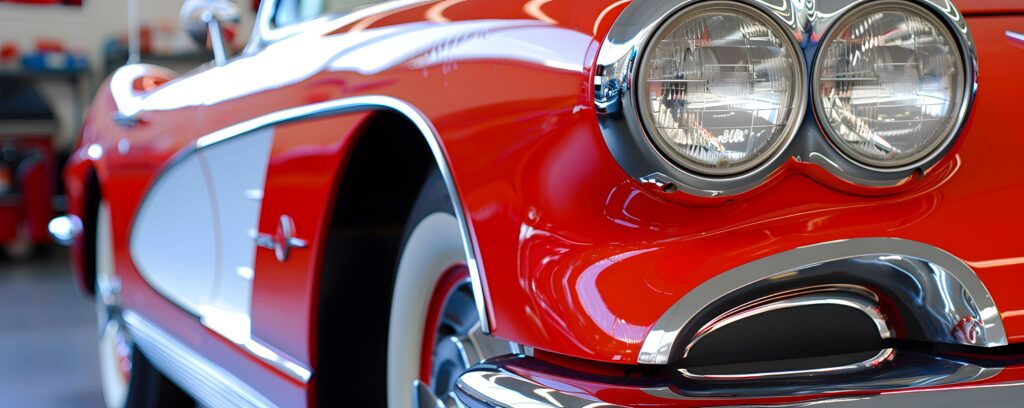
Final Touches And Detailing
When it comes to restoring the paint on an old car, the final touches and detailing play a crucial role in bringing out its true beauty. This is the stage where you refine the paintwork, giving it that glossy finish and ensuring that every inch of the car shines. In this article, we will explore the essential final touches and detailing techniques that will transform your old car into a head-turning masterpiece.
Wet Sanding
Wet sanding is a technique used to smooth out any imperfections on the car’s surface, such as scratches, swirl marks, or rough spots. It involves using sandpaper soaked in water to gently remove layers of clear coat while minimizing the risk of damaging the paint. This process helps create a smooth, even surface that will provide a flawless foundation for the next steps.
Buffing And Polishing
Once the wet sanding is complete, it’s time to give your car’s paintwork a brilliant shine through buffing and polishing. Buffing involves using a rotary or orbital buffer to apply a compound that helps remove any remaining imperfections and restore the paint’s luster. Polishing, on the other hand, involves using a finer abrasive to refine the surface and enhance its shine even further. These steps, when done properly, can result in a paint finish that looks like it just rolled out of the showroom.
Sealant And Wax Application
To protect and maintain the newly restored paintwork, it is crucial to apply a sealant and wax. A sealant forms a protective layer on the paint, shielding it from UV rays, dirt, and other environmental contaminants. Wax, on the other hand, brings out the depth and richness of the paint, giving it a smooth and glossy appearance. By combining these two products, you can prolong the longevity of your car’s paint and ensure that it stays looking its best for years to come.
Protecting And Maintaining The Restored Paint
Restoring old car paint is a meticulous process that requires dedication and attention to detail. Once you have breathed new life into the paint job of your beloved classic car, it is crucial to take steps to protect and maintain the restored finish for years to come.
Paint Sealant Application
Applying a high-quality paint sealant is an essential step in preserving the freshly restored paint of your classic car. A paint sealant creates a durable protective layer that acts as a shield against environmental contaminants, UV rays, and other damaging elements.
Regular Washing And Waxing
Maintaining the luster of your old car’s paint job requires regular washing and waxing. Washing removes dirt and grime that can dull the finish, while waxing provides an extra layer of protection and enhances the shine of the paint.
Frequently Asked Questions Of Old Car Paint Restoration
What Are The Common Causes Of Car Paint Fading?
Exposure to UV rays, environmental pollutants, and poor maintenance are common causes of car paint fading.
How Can I Restore The Paint On My Old Car?
To restore the paint on your old car, start with thorough washing, then use clay bar treatment and apply a quality car polish.
Is Diy Car Paint Restoration Effective?
Yes, with the right products and techniques, DIY car paint restoration can effectively improve the appearance of your old car.
Can A Professional Car Detailing Service Restore Old Car Paint?
Absolutely, professional car detailing services have the expertise and equipment to effectively restore old car paint to its former glory.
What Are The Benefits Of Restoring Old Car Paint?
Restoring old car paint improves aesthetics, protects the car from corrosion, and enhances its resale value.
How Often Should I Consider Restoring My Old Car Paint?
The frequency of old car paint restoration depends on factors like storage conditions and driving habits, but typically every 6-12 months is recommended.
Conclusion
To restore the paint on an old car, several steps need to be followed, including cleaning, sanding, and polishing. By doing so, you can bring back its original shine and protect the paint from further damage. Remember to use high-quality products and take your time to ensure a successful restoration.
With patience and dedication, you can transform your old car and make it look brand new again. Happy restoring!

